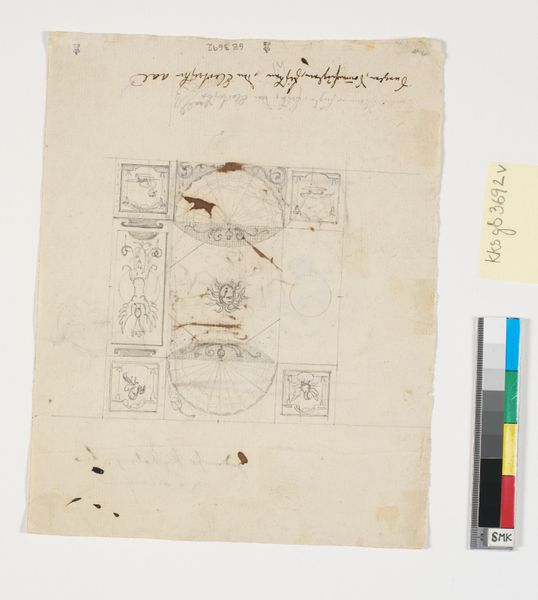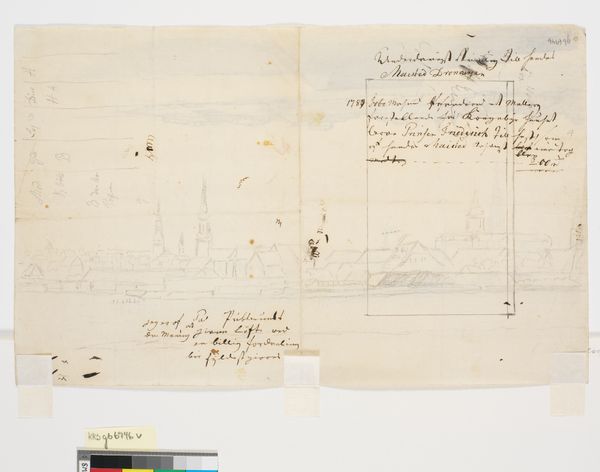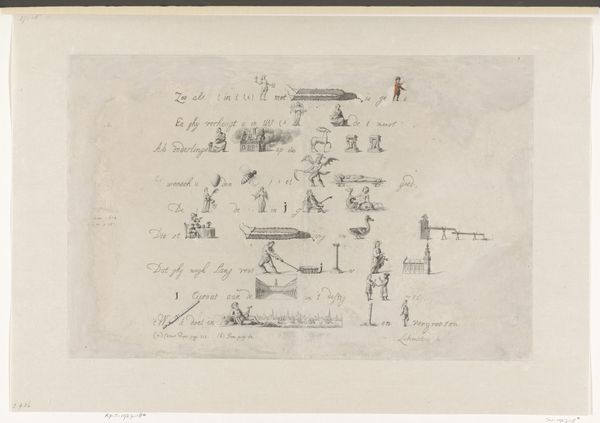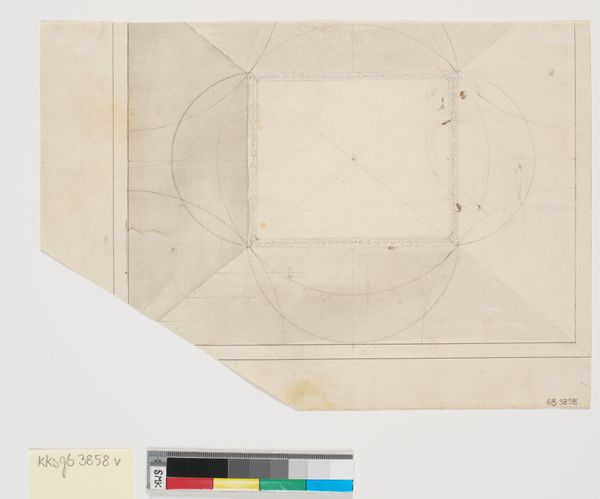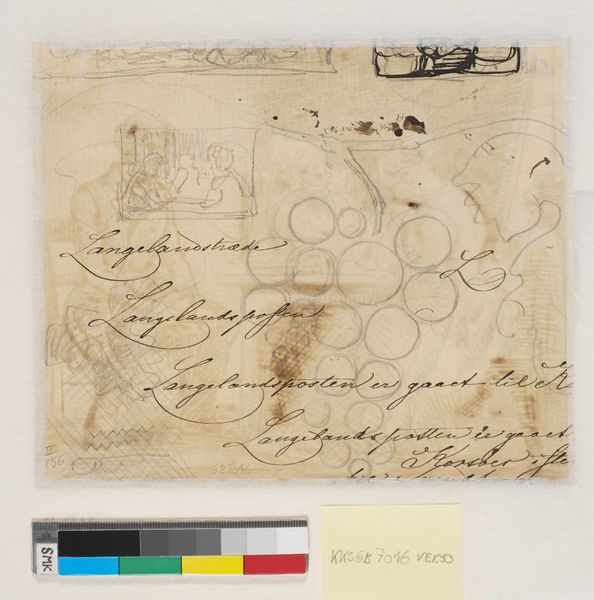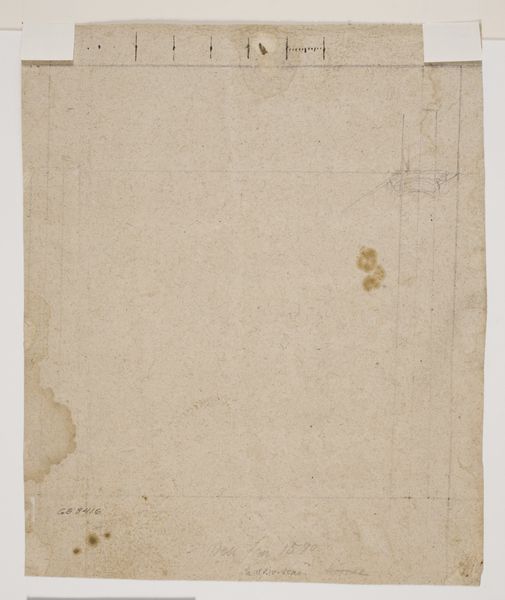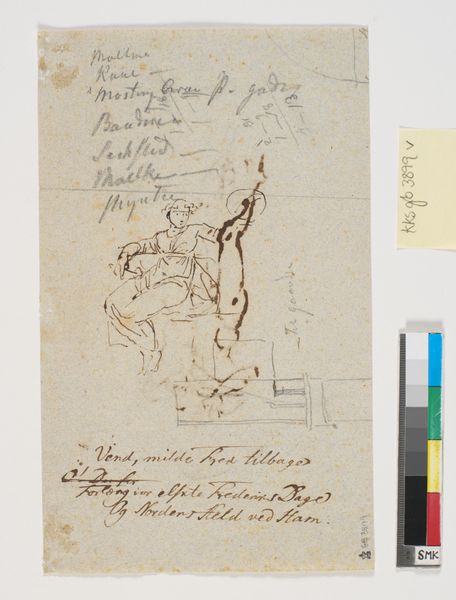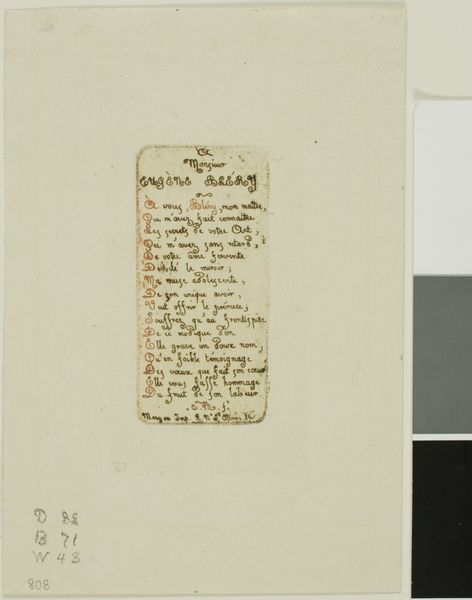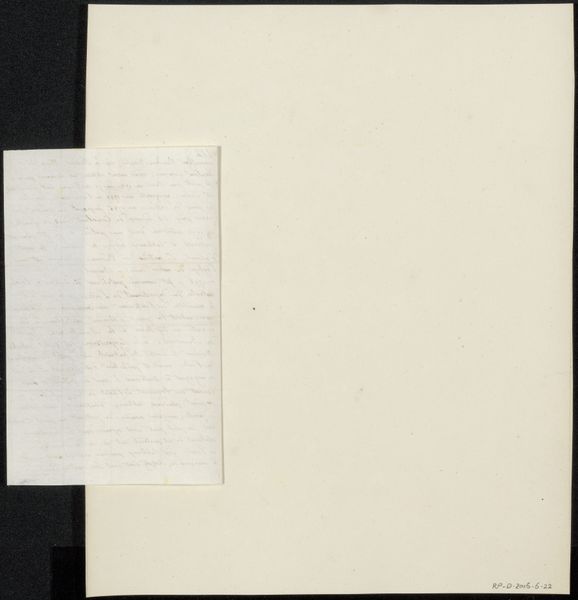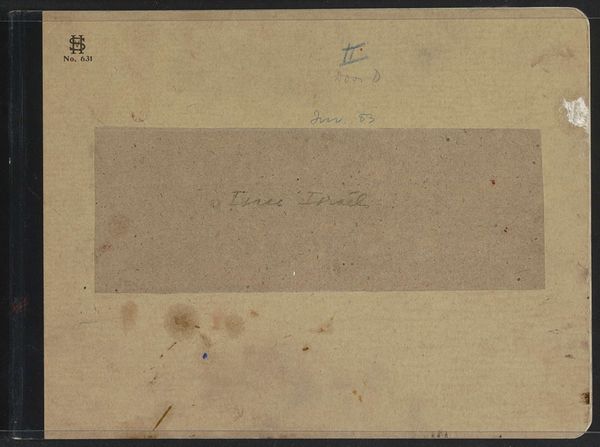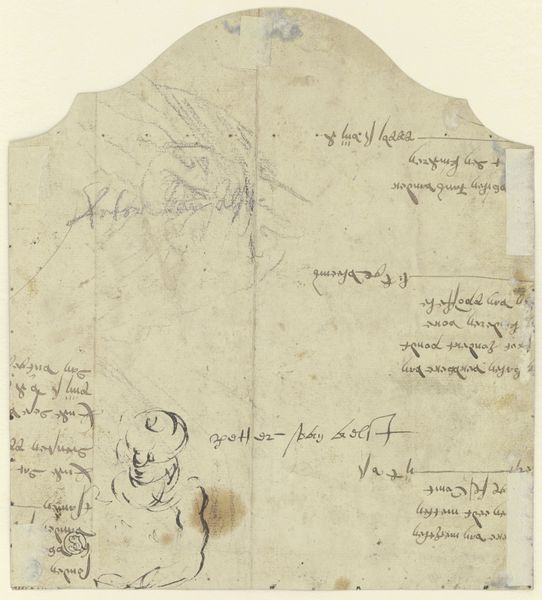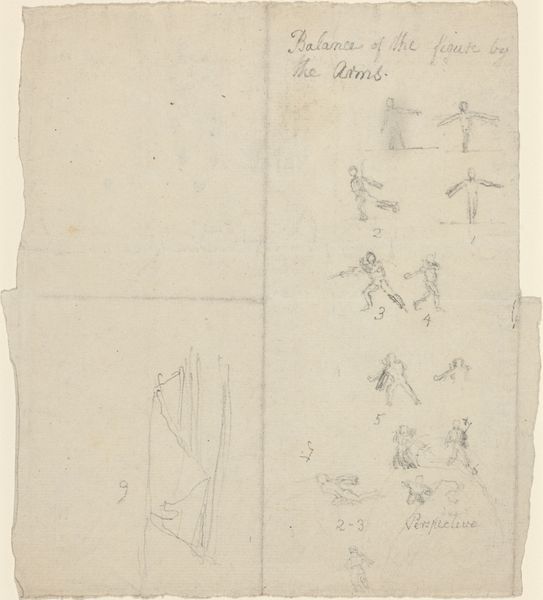
Et let rids af vuggen som prins Christian Frederik bestilte i slutningen af 1806 1804 - 1807
0:00
0:00
drawing, pencil
#
drawing
#
sketch
#
pencil
Dimensions: 184 mm (height) x 170 mm (width) (bladmaal)
Curator: We’re looking at a pencil sketch by Nicolai Abildgaard, titled "Et let rids af vuggen som prins Christian Frederik bestilte i slutningen af 1806"—loosely translated, "A light sketch of the cradle Prince Christian Frederik ordered at the end of 1806." It was made sometime between 1804 and 1807 and now resides at the SMK, the National Gallery of Denmark. Editor: There’s a charming immediacy to this drawing; you feel you're right there as the artist envisions a special commission, even though it's not really about the fine rendering. Its stark simplicity almost belies the future object's grand potential. Curator: Note the elegant, simple construction; Abildgaard has employed very few lines, the architectural shapes of the cradle emerging with precise economy, mostly rendered in simple cuboids and basic curves. It emphasizes volume using hatching to show light and shadows, making a statement about neoclassicism without heavy detail. Editor: Cradles are potent symbols; in their design and imagery we encode our hopes for the future, expectations of privilege or destiny. Think of royal heraldry and family emblems, imbuing this tiny potential space with cultural weight, designed as a miniature theater stage of dynastic hope. Curator: Interesting idea of it being a stage... Abildgaard captures not a performance, but potential in form, an abstraction. We see geometric patterns, circles and squares primarily, devoid of extraneous decoration. The aesthetic isn’t about what it is *for*, but how it exists formally on the paper itself. Editor: And yet, look at the inscription in the bottom half of the page. Although partially illegible, words invoke specific places and roles—'merchant of regents,' as you could translate some of it. So perhaps even in this initial draft we see the convergence of formal intent, material possibility and symbolic intent. Curator: A convergence, yes. And what resonates for me, in our present moment, is how a modest preliminary design holds the germ for interpreting culture, the symbolic order itself captured with understated visual rhetoric. Editor: Agreed; tracing these historical gestures brings to life that the everyday, like a child's bed, is always alive with rich association.
Comments
No comments
Be the first to comment and join the conversation on the ultimate creative platform.
